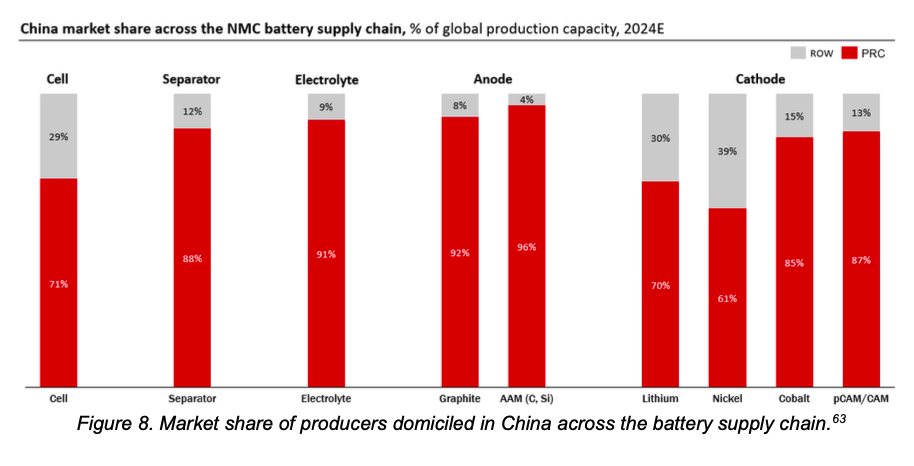Canada has another supply chain needing immediate attention: energy.
The warning light triggered by that need started flashing red when Donald Trump began broadcasting dates and targets for his 2025 tariff retribution tour.
And that warning light will be flashing various shades of emergency red on both sides of the 49th Parallel.
On this side of the line, the federal Liberal-NDP Debt Accumulation Coalition (DAC) leader has done his best to undermine Canada’s energy supply chain integrity.
He and DAC have worked diligently to erect political and bureaucratic barriers to marketing and developing the country’s energy resources.
How else to explain federal government major project reviews that take an average of 42 to 60 months in Canada compared with 24 to 36 months in the United States?
The result: Canada remains an also-ran in global markets where it could and should be a leader.
Liquefied natural gas is a good example.
On Boxing Day 2024, Plaquemines LNG shipped its first cargo of liquefied natural gas after starting production in mid-December.
The U.S. Gulf Coast facility south of New Orleans in Louisiana is now the eighth LNG export terminal operating in the United States.
Meanwhile, in Canada, where 18 LNG export facilities were proposed at the outset of the LNG boom in 2014, the country still has no LNG exporter terminals operating.
By some miracle, it might have one up and running this year when LNG Canada is scheduled to begin operation in Kitimat.
That national bobbling of the LNG ball would be comic were it not such an indictment of infrastructure inertia in a resource-rich land reduced to being a discount raw material provider to the United States.
No wonder Trump looks north and jokes about Canada’s potential status as the 51st state.
Because it has failed to deliver the Northern Gateway pipeline and other ambitious energy infrastructure projects, Canada has locked itself into long-term dependence on the U.S. as the only market for high-quality Canadian energy resources that would yield more lucrative returns in other markets.
That dependency downside is amplified when antagonistic U.S. leadership confirms that America is no friend to Canada, regardless of how long the two countries have been allies.
However, the U.S. has energy supply chain issues of its own.
The country’s Department of Energy (DOE) notes, for example, that the U.S. energy supply chain is overly reliant on “covered nations – a group including China, Russia, Iran and North Korea – for the production of critical minerals and other key inputs for energy production.”
The West’s manufacturing and resource extraction slumber party has promoted that reliance.
The U.S. and the rest of the party participants have offloaded the hard work of real wealth generation to countries committed to market dominance while they danced the night away on currency and credit amassed by previous generations.
As DOE points out, companies controlled or in the pocket of China’s ruling Chinese Communist Party account for between 70% and 80% of the global battery supply chain’s mineral processing and component manufacturing capacity.
Unlike Canada, the U.S. is now investing heavily in domestic energy technology manufacturing.
Approximately US$80 billion in DOE grants and awards along with tax incentives have resulted in the private sector investing more than US$450 billion in the country’s energy industrial base since 2021.
Aside from the need to shore up its energy supply chain security and wean itself from reliance on “covered nations” for critical links in that chain, the U.S. and the rest of North America face a huge energy demand spike.
That demand is driven by the 21st century’s electrification and digital industrial revolution. Artificial intelligence, data centres and other energy-hungry sectors have an insatiable appetite for power.
The DOE therefore estimates that overall electricity demand in the U.S. alone will grow by between 15% and 20% in the next decade and double by 2050.
Up here in Coddle Country, the Trump tariff threats have rattled government naptime blinds and alerted a slumbering populace to its energy supply chain security threats.
So, we have B.C.’s NDP government pledging to accelerate permitting for the North Coast Transmission Line to supply the province’s north with power to build and develop resource projects and other initiatives while Premier David Eby ponders a ban on critical mineral exports to America as a potential Trump tariff retaliation.
Both sides in this mutually debilitating exercise are disregarding how much these fissures in North American solidarity will benefit China and other enemies of the West.
www.linkedin.com/in/timothyrenshaw
@trenshaw24.bsky.social
@timothyrenshaw










